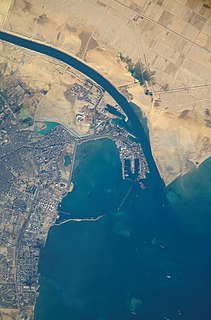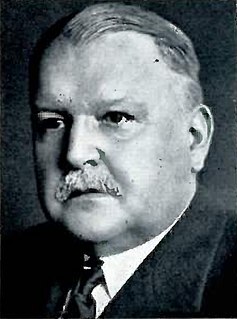Biography
Youth, education, first career and military service
McBryde was born in Mobile, Alabama to Thomas Calvin McBryde and Julia Pierce (Horton) McBryde, [2] both natives of Alabama. [3] He obtained his BSc in mechanical and electrical engineer from the Alabama Polytechnic Institute, now Auburn University, in 1897. [1]

Mobile is the county seat of Mobile County, Alabama, United States. The population within the city limits was 195,111 as of the 2010 United States Census, making it the third most populous city in Alabama, the most populous in Mobile County, and the largest municipality on the Gulf Coast between New Orleans, Louisiana, and St. Petersburg, Florida.

Auburn University is a land-grant and public research university in Auburn, Alabama, United States. With more than 23,000 undergraduate students and a total enrollment of more than 30,000 with 1,260 faculty members, Auburn is the second largest university in Alabama. Auburn University is one of the state's two public flagship universities.
After his graduation in 1897 McBryde started at the Electric Lighting Co. of Mobile, and next as designer and drafter at George F. Barber. In 1899 he served in the Spanish–American War the U.S. Lighthouse Department and U.S. Engineers Corps. As chief electrician of the U.S. Army Transport-ship the Sheridan he made the voyage from New York City over the Atlantic and Mediterranean, via the Suez Canal over the Philippines and Nagasaki, Japan, to its destination in San Francisco. [3] [1]

The Spanish–American War was an armed conflict between Spain and the United States in 1898. Hostilities began in the aftermath of the internal explosion of USS Maine in Havana harbor in Cuba, leading to U.S. intervention in the Cuban War of Independence. The war led to emergence of U.S. predominance in the Caribbean region, and resulted in U.S. acquisition of Spain's Pacific possessions. That led to U.S. involvement in the Philippine Revolution and ultimately in the Philippine–American War.

The Suez Canal is a sea-level waterway in Egypt, connecting the Mediterranean Sea to the Red Sea through the Isthmus of Suez. Constructed by the Suez Canal Company between 1859 and 1869, it was officially opened on 17 November 1869. The canal offers watercraft a more direct route between the North Atlantic and northern Indian Oceans via the Mediterranean and Red Seas, thus avoiding the South Atlantic and southern Indian Oceans and thereby reducing the journey distance from the Arabian Sea to, for example, London by approximately 8,900 kilometres (5,500 mi). It extends from the northern terminus of Port Said to the southern terminus of Port Tewfik at the city of Suez. Its length is 193.30 km (120.11 mi), including its northern and southern access channels. In 2012, 17,225 vessels traversed the canal.

The Philippines, officially the Republic of the Philippines, is an archipelagic country in Southeast Asia. Situated in the western Pacific Ocean, it consists of about 7,641 islands that are categorized broadly under three main geographical divisions from north to south: Luzon, Visayas, and Mindanao. The capital city of the Philippines is Manila and the most populous city is Quezon City, both part of Metro Manila. Bounded by the South China Sea on the west, the Philippine Sea on the east and the Celebes Sea on the southwest, the Philippines shares maritime borders with Taiwan to the north, Vietnam to the west, Palau to the east, and Malaysia and Indonesia to the south.
Later career
After honorably discharged in 1889 McBryde was appointed assistant resident engineer at the Yuba Power Company, now the Pacific Gas and Electric Company, at the Colgate Hydro-Electric Power Plant in charge of construction its hydroelectric powerhouse. From 1900 to 1902 he was assistant superintendent at the new Peyton Chemical Company of Martinez. In 1902-03 back at the Pacific Gas & Electric Company he was chief draftsman in the engineering department. [3] [1]

The Pacific Gas and Electric Company (PG&E) is an American investor-owned utility (IOU) with publicly traded stock that is headquartered in the Pacific Gas & Electric Building in San Francisco. PG&E provides natural gas and electricity to most of the northern two-thirds of California, from Bakersfield and Barstow to near the Oregon State Line and Nevada and Arizona State Line, which represents 5.2 million households. PG&E is overseen by the California Public Utilities Commission. It is the leading subsidiary of the holding company PG&E Corporation, which has a market capitalization of $3.242 billion as of January 16, 2019. It was founded by George H. Roe after California's Gold Rush and by 1984 was the United States' "largest electric utility business." PG&E is one of four regulated, investor-owned utilities (IOU)s in California; the other three are PacifiCorp's Pacific Power, Southern California Edison and Sempra Energy's San Diego Gas & Electric.
In 1903 he joined the Hercules Powder Company in Hercules, California as resident engineer. He got promoted first chief of the West Coast engineering and construction department in 1906, [1] and assistant superintendent in 1909. [3] In 1919 he moved to the California & Hawaiian Sugar Refining Co. of San Francisco, where he was secretary and assistant to the general manager. In 1927 he started his own consultancy firm. He made his second and third circumnavigation of the globe, via the Panama Canals and Strait of Magellan, studying the prominent countries along the way. [1]

Hercules is a city in western Contra Costa County, California. Situated along the coast of San Pablo Bay, it is located in the eastern region of the San Francisco Bay Area, about 10 miles (16 km) north of Berkeley, California. As of 2010, its population was 24,060, according to the United States Census Bureau. The site of Hercules was first developed in 1881 as a manufacturing facility of the California Powder Works for the production of its patented dynamite formulation, Hercules powder. In 1882, the Hercules Powder Company was incorporated and assumed responsibility for the Hercules site. It was one of several explosive manufacturers that were active along the Pinole shoreline in the late 19th to the mid-20th century. The small company town that grew up near the facility subsequently became known as "Hercules", and was incorporated at the end of 1900. Starting in the 1970s, Hercules was heavily redeveloped as suburban bedroom community that lies along the I-80 corridor in Western Contra Costa County. It has a very ethnically diverse population.






